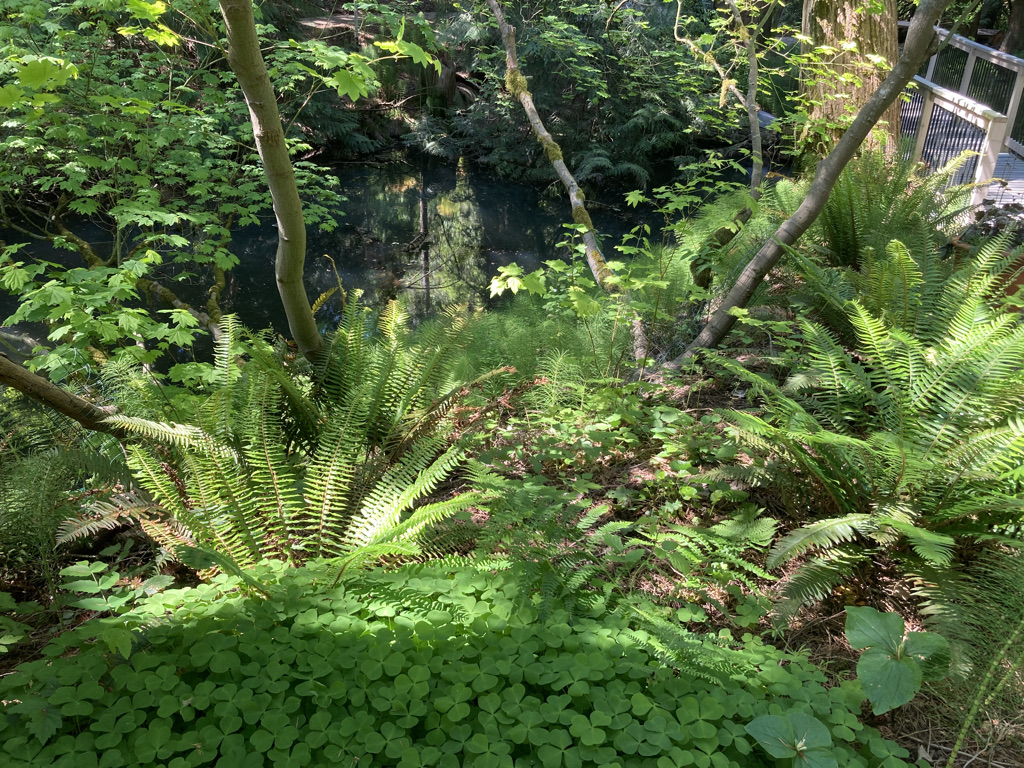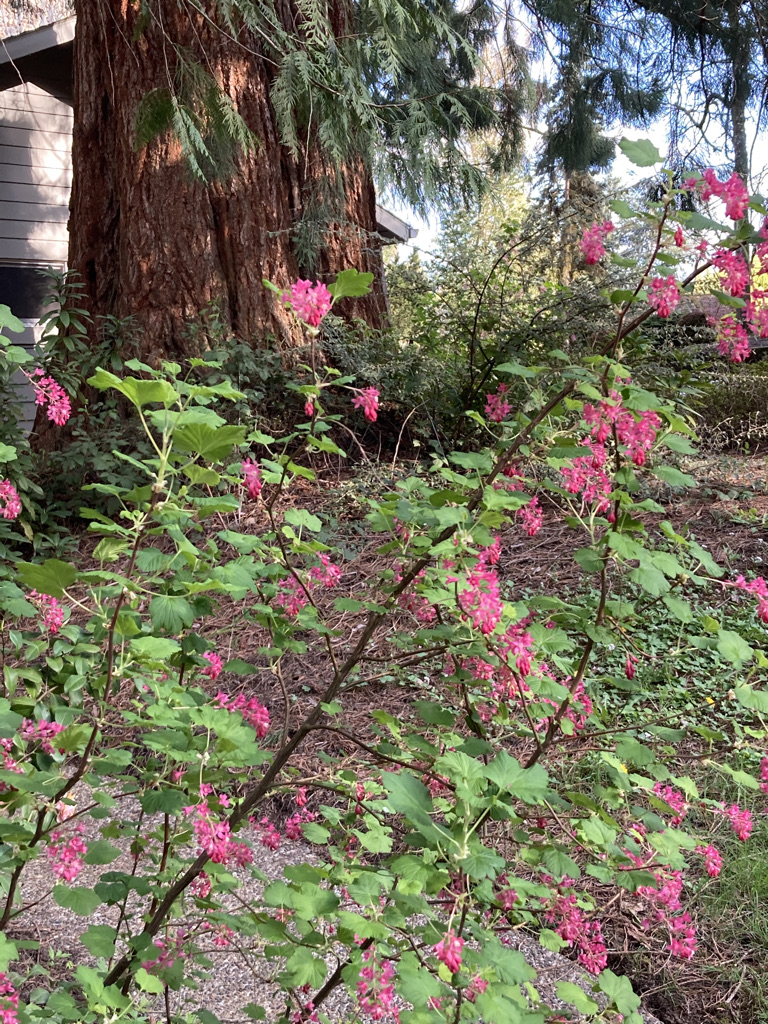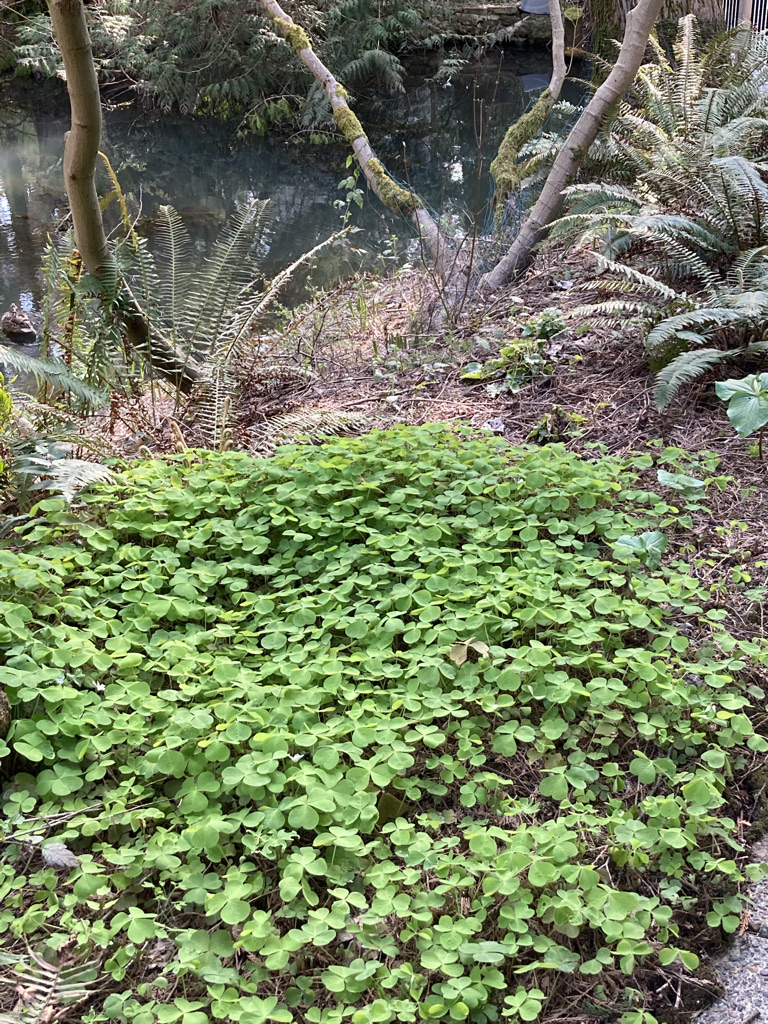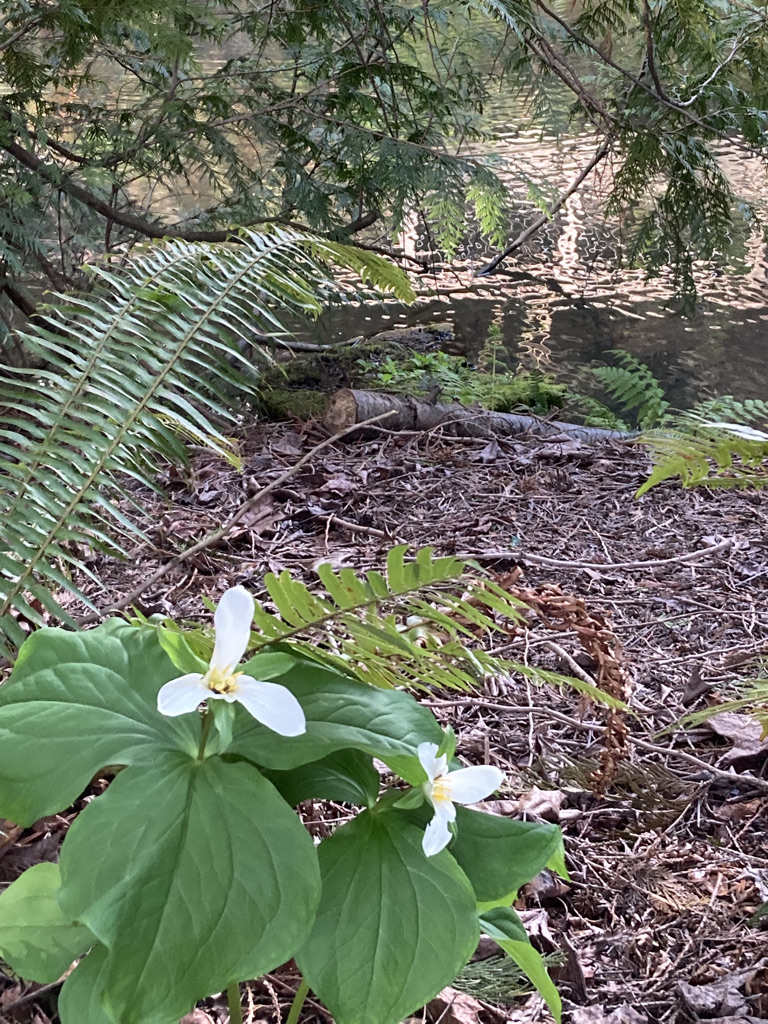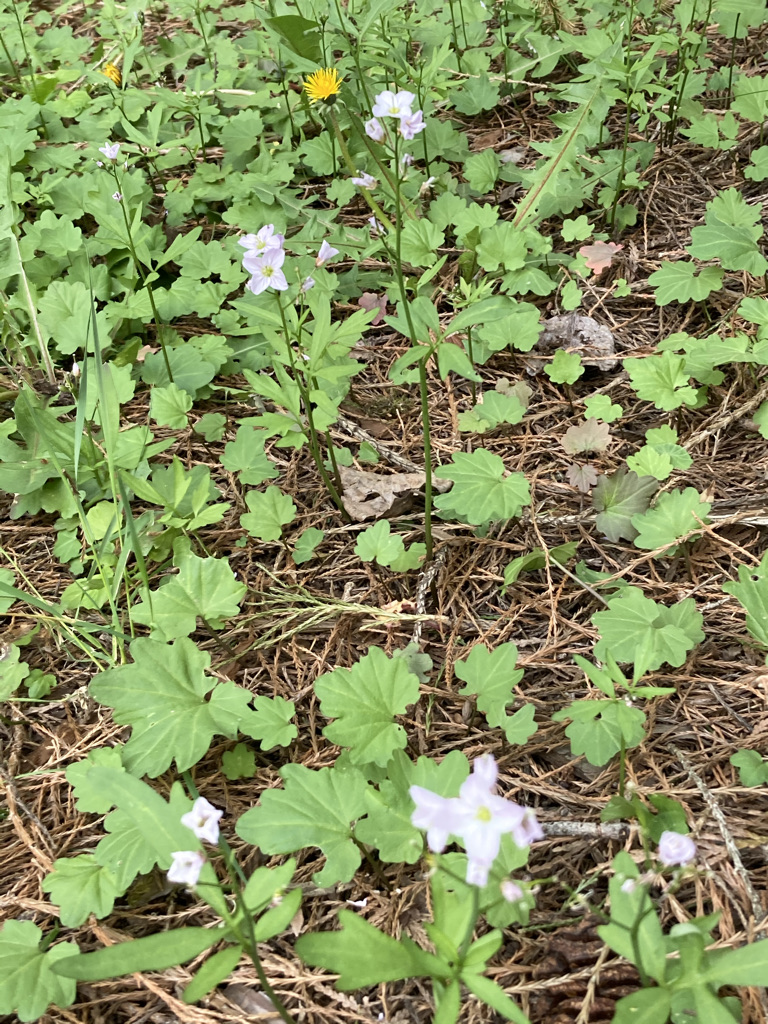Site Information: Located in West Linn, Cindy’s habitat has a pond that drains into the Willamette River.
What inspired you to enroll in the Backyard Habitat Certification Program?
I enrolled in 2011 when the program first came to Lake Oswego. My Mountain Park home certified at the first site visit. I have a BS in Natural Resource Conservation so I have always been interested in natural areas and plants.
How would you describe your habitat?
We bought this 1954 property in West Linn in 2012. It has a large creek that was dammed into a pond in the front yard and the Willamette River in the backyard. The pond drains into the river. We have over 30,000 square feet that we maintain. The property was covered in ivy under the huge cedar trees in front and the backyard has a boulder field that was covered in blackberry. Clackamas Soil and Water Conservation District sent a crew out to remove ivy around the pond. We installed wood duck boxes that have been used every year. We also found an old waterfall as well as many nice stumps under the ivy that we restored and birds love it.

What are your top three favorite native plants and why do you love them?
I can’t answer this, there are too many!
What changes have you observed as a result of creating habitat?
After we removed ivy around the pond, some natives have come up on their own, including trillium. I have planted a little more every year. We have had some interesting critters show up in the pond like blue and green herons, kingfishers, beaver, and even an otter.
What were the two most significant challenges you encountered while creating habitat, and how did you address them?
The hidden ivy under plants was hard to get at as well as the needle nose ivy that is particularly hard to pull. The blackberries on the rocks was easier since I used my feet to push it off the rock before cutting. I lost a few plants that didn’t do well in the dry shade under the cedars.
What resources did you find especially helpful?
Clackamas Soil and Water Conservation District helped a lot. I also had two Fish and Wildlife agents out to give me advice on the pond.
How do you enjoy your Backyard Habitat throughout the different seasons? What are its highlights in each season?
I have learned that planting bare root trees take a lot longer to flower! This year my chokecherry is finally going to bloom and it has been 7 years! In the spring, the ducks arrive and it is interesting to see what flowers since many of my plants are still young. We have a lot of vine maples hanging over the pond and the look changes dramatically in the winter when the leaves are gone.
What part of your backyard habitat are you most proud of?
The pond. It was pretty bare around it after the ivy removal in 2013 and now has filled in a lot. There are still some bare spots I am working on. Twinberry is finally filling in under and around our rain chains near the front porch and next to the waterfall. It will flower for the first time this year! Right now I have a full sun area I am working on making a pollinator garden.
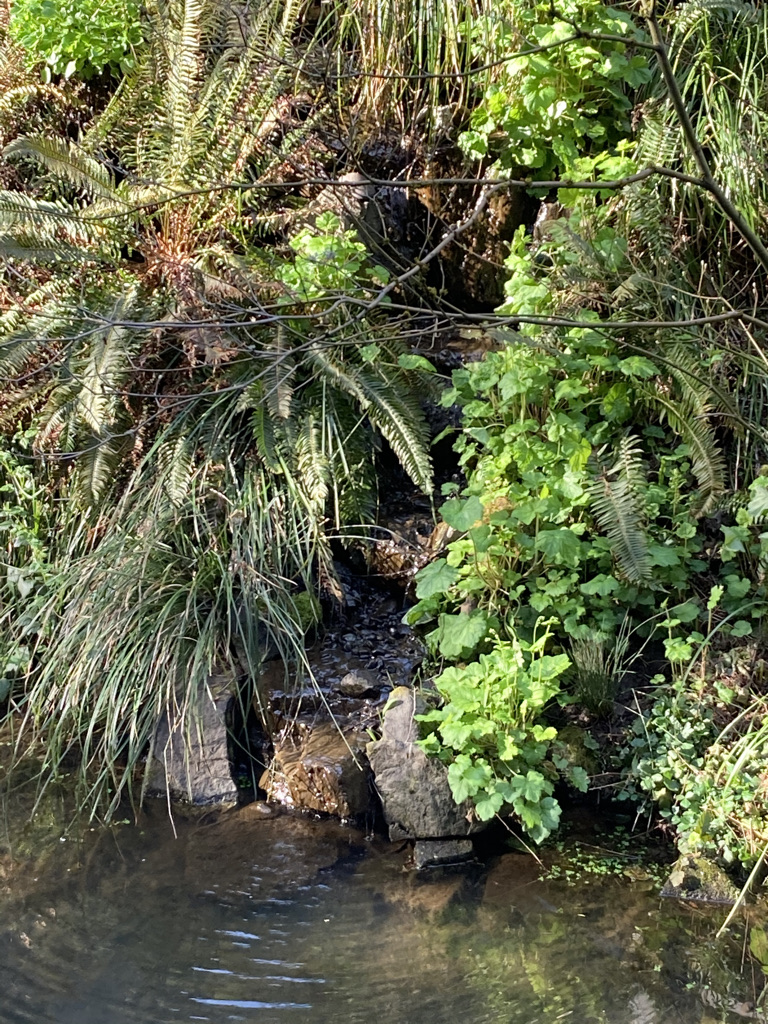
Is there anything else you’d like to add about your journey?
I was surprised how little of the ivy returned around the pond. There is a large buildup of needles and debris now so I rarely see ivy starts in those areas. I have been pretty relaxed about letting horsetail and native trailing blackberry fill in areas.

I have learned to let the native trailing blackberry and native horsetail take over in some areas. Low maintenance! 
I let the wild cucumber bloom and only remove it later when it starts to die back on its own. The bees like the flowers. 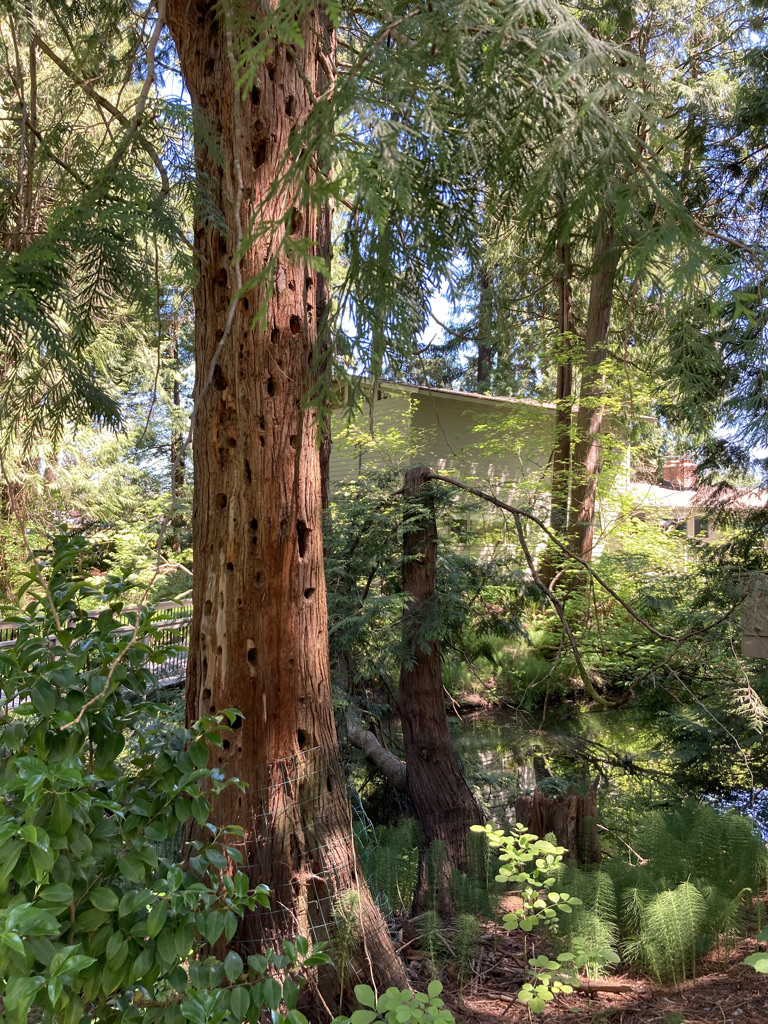
This cedar tree is still alive and hosts all kinds of bees and birds 